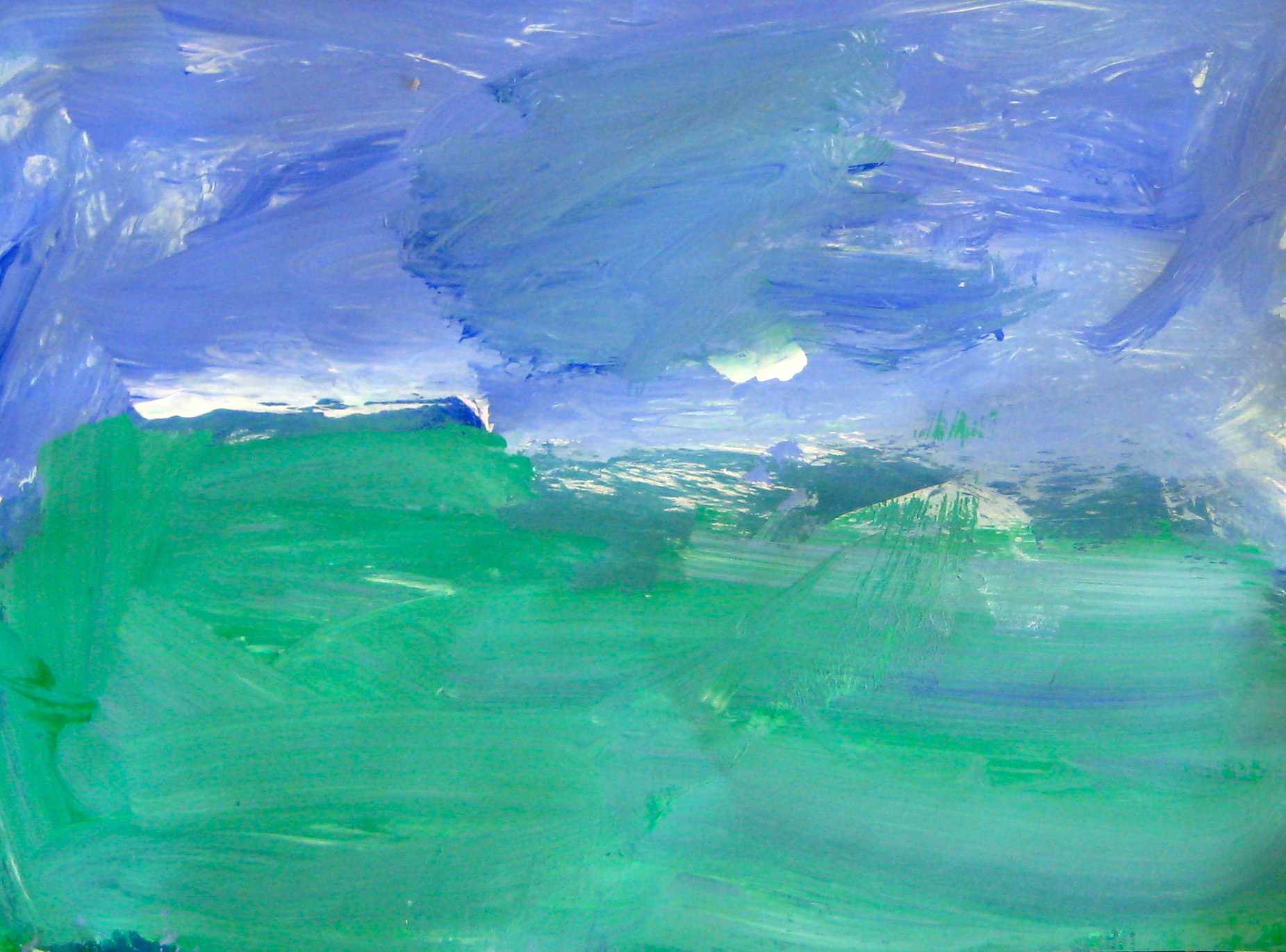Tempera Technique
A fun and expressive way to use tempera paint is to paint the first color on the paper and mix other colors directly into the first color on the paper instead of on the palette. This method of application results in paintings with a surface that can be loose and 'brushy' or smooth and controlled--it is up to the student.
Grade 2 Ocean Mixed Media
A project that I like to do with 2nd and 3rd grade students is to have them paint an underpainting of ocean and sky to which, when dry, they add details such as bridges, boats, fish, people, cars, etc with oil pastel, crayon and collage.
Below is a group of under paintings where second grade students applied and mixed the paint directly on the paper. Viewing the paintings as a group reveals the wide variety of approaches to applying and mixing the tempera paint ranging from smooth and controlled to bold and dynamic.
A primary purpose for having students paint with this technique is that students can't help but feel what it is like to enjoy paint for itself . . . apart from subject or imagery . . . an appreciation for the qualities of paint and how beautiful and expressive it can be. The photos below are details from the above student paintings showing the beauty and expressiveness of paint and what can happen with loose brushstrokes.
Grade 3 Collage using Tempera Painted Papers applied with above technique
Grade 2 Collage using Tempera Painted Papers applied with above technique
Grade 3 Mixed Media, 'Sky & Land, Night & Day" with a tempera underpainting
Connecting to the Art World
This enjoyment of the beauty, complexity and expressiveness of paint can be seen in artists such as Turner, Van Gogh and de Kooning . . . when I look at these paintings I get the feeling that the artists enjoy the look of paint, the feel of paint, that they enjoy playing around and experimenting with paint. I also notice that the way the paint is manipulated contributes to the message and the meaning of their art.







































